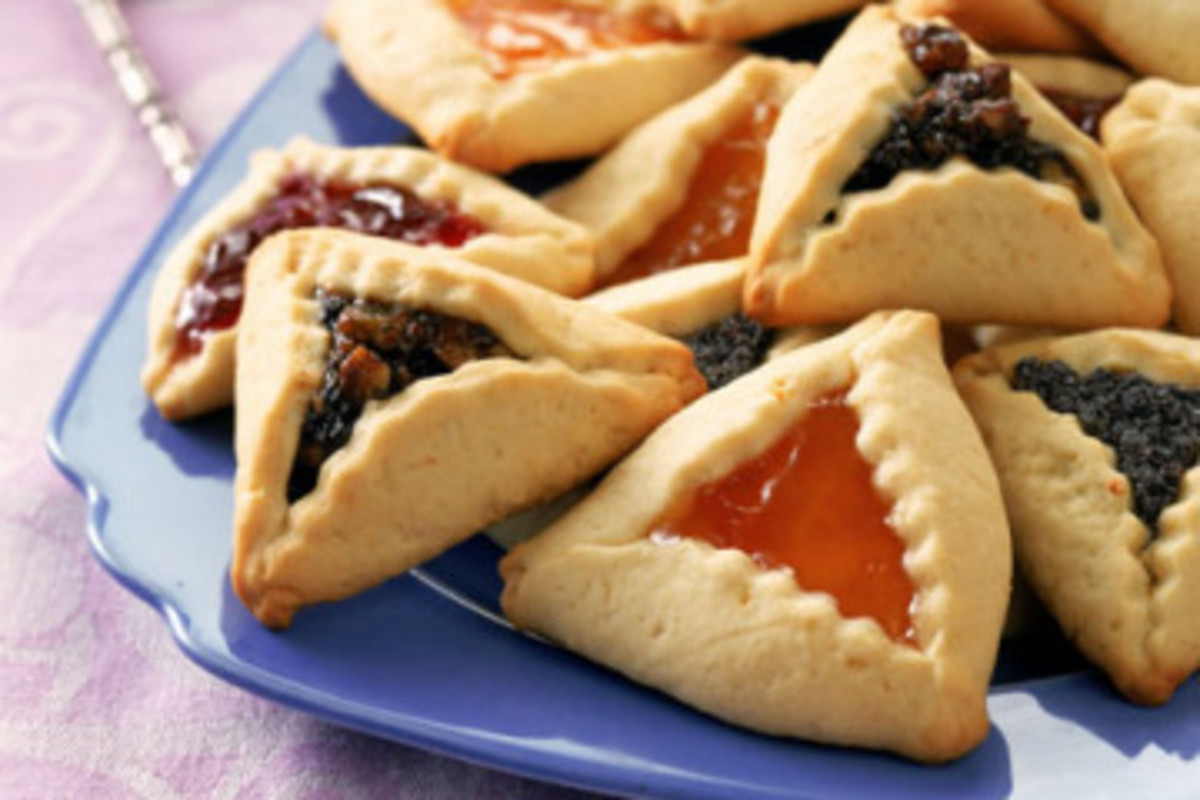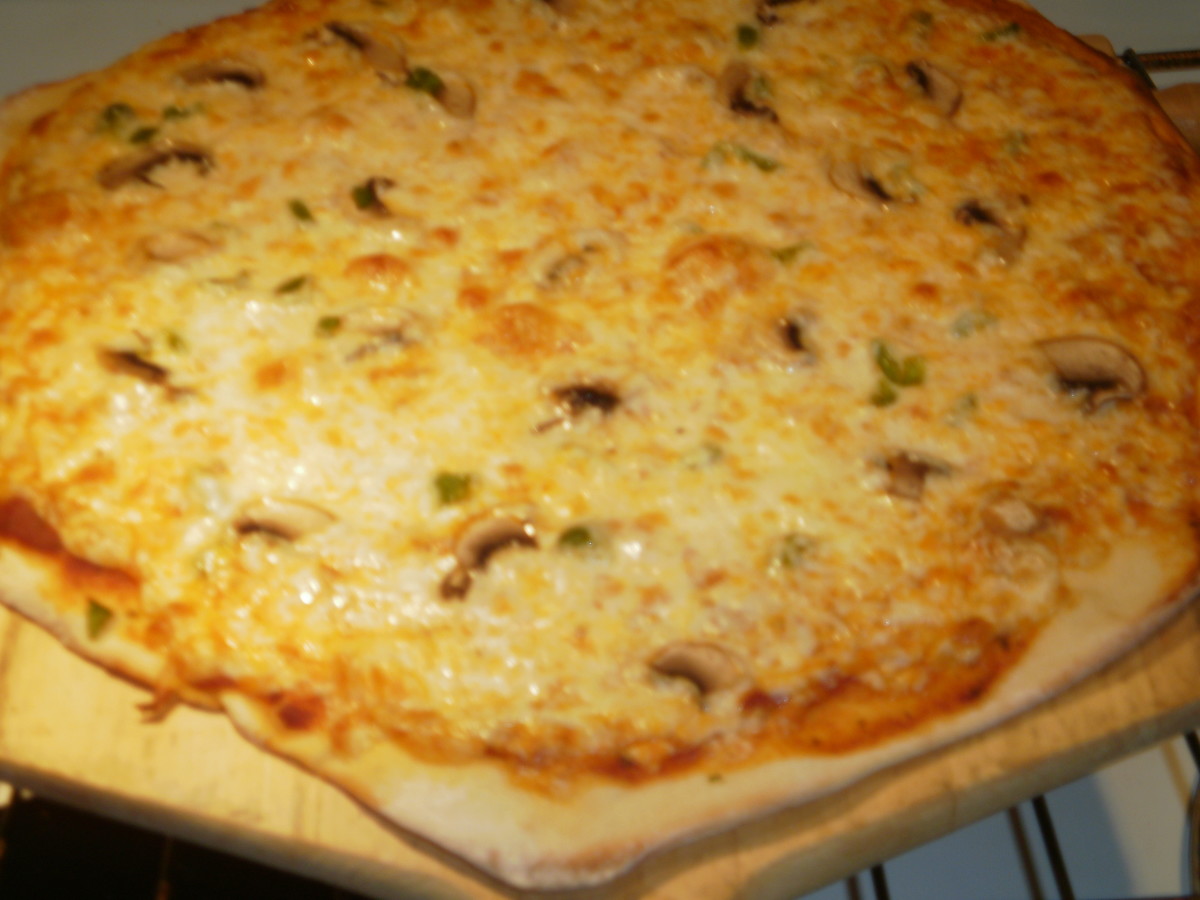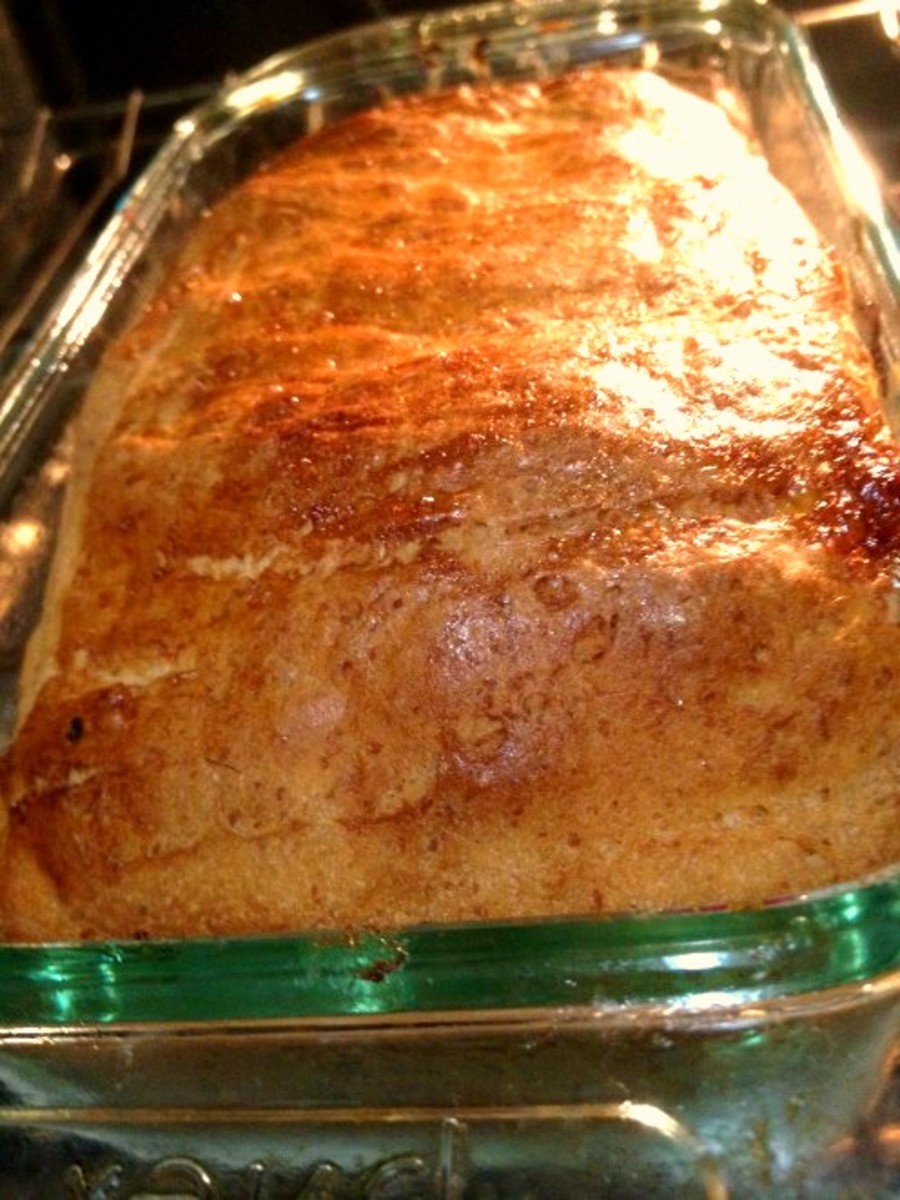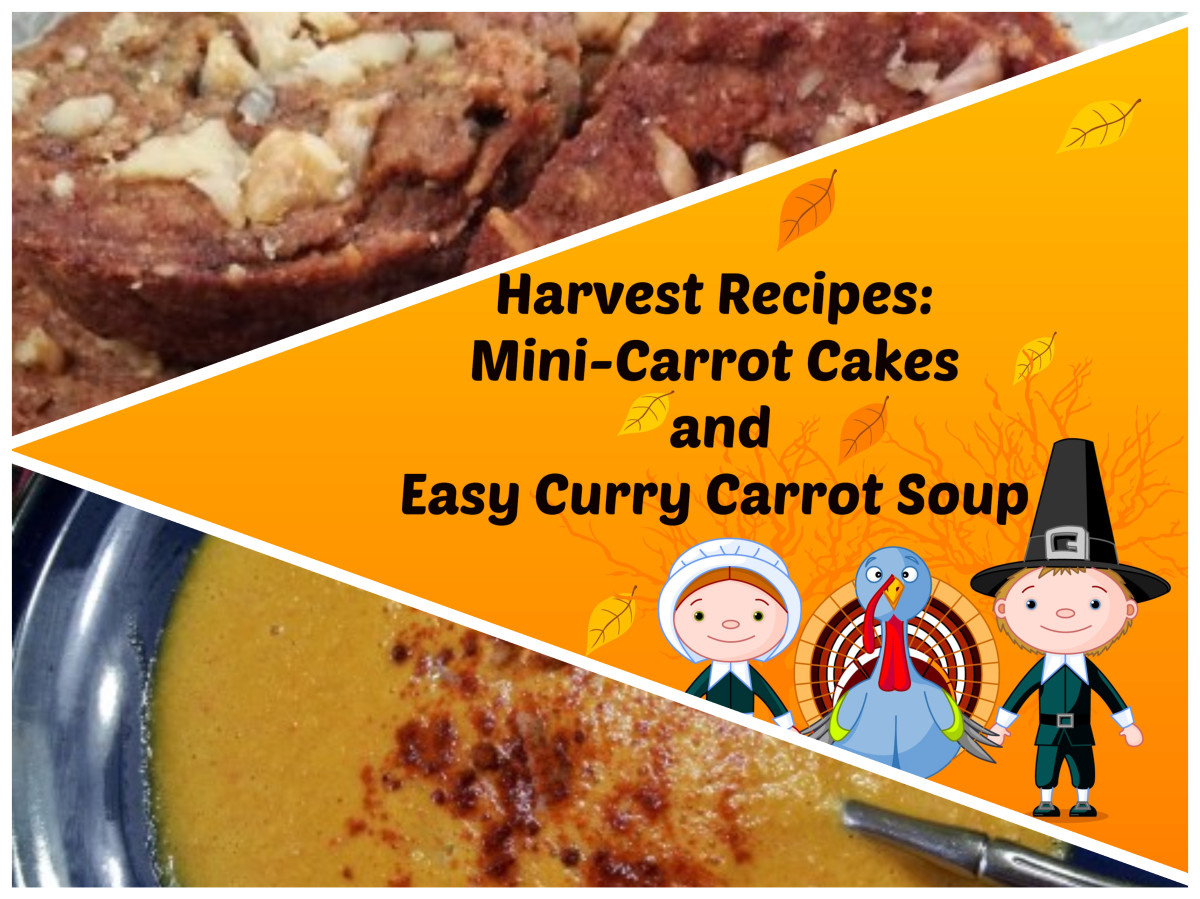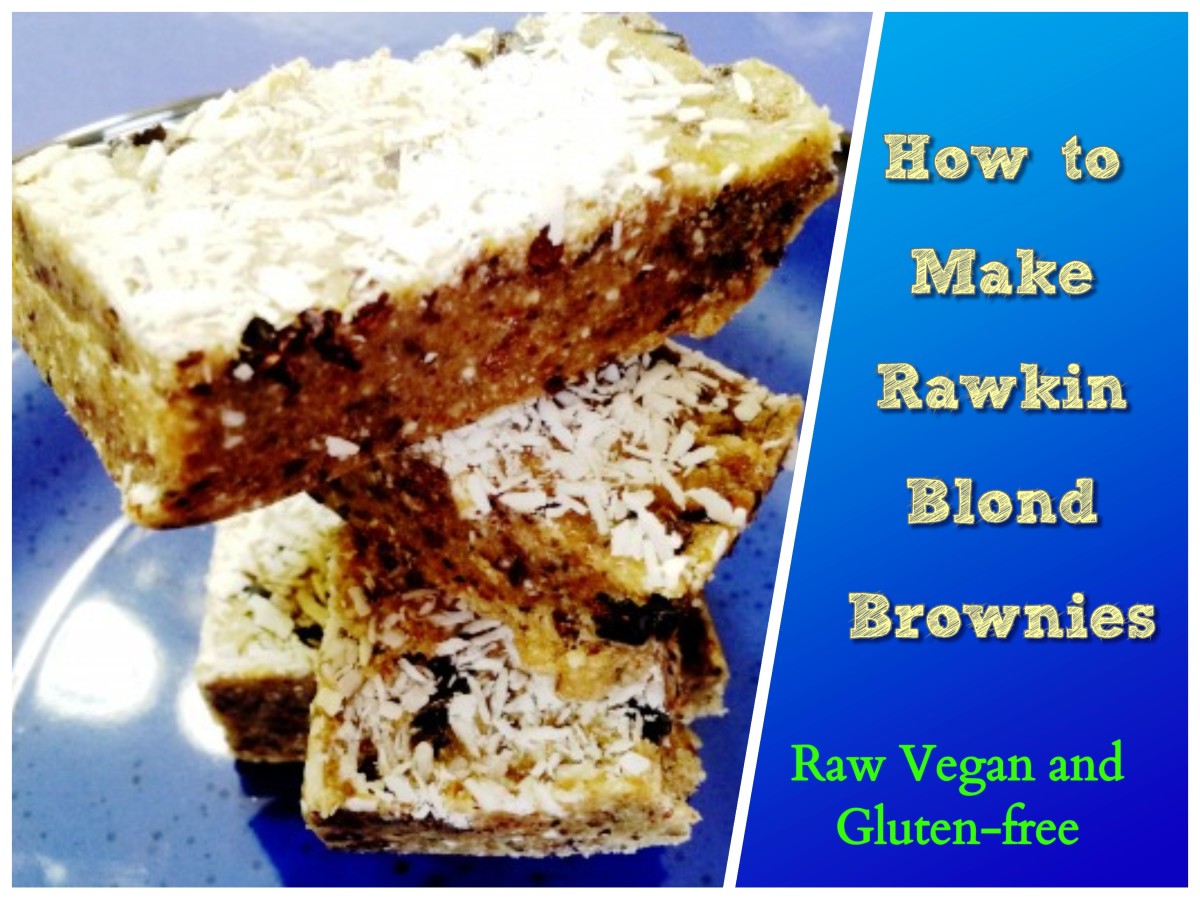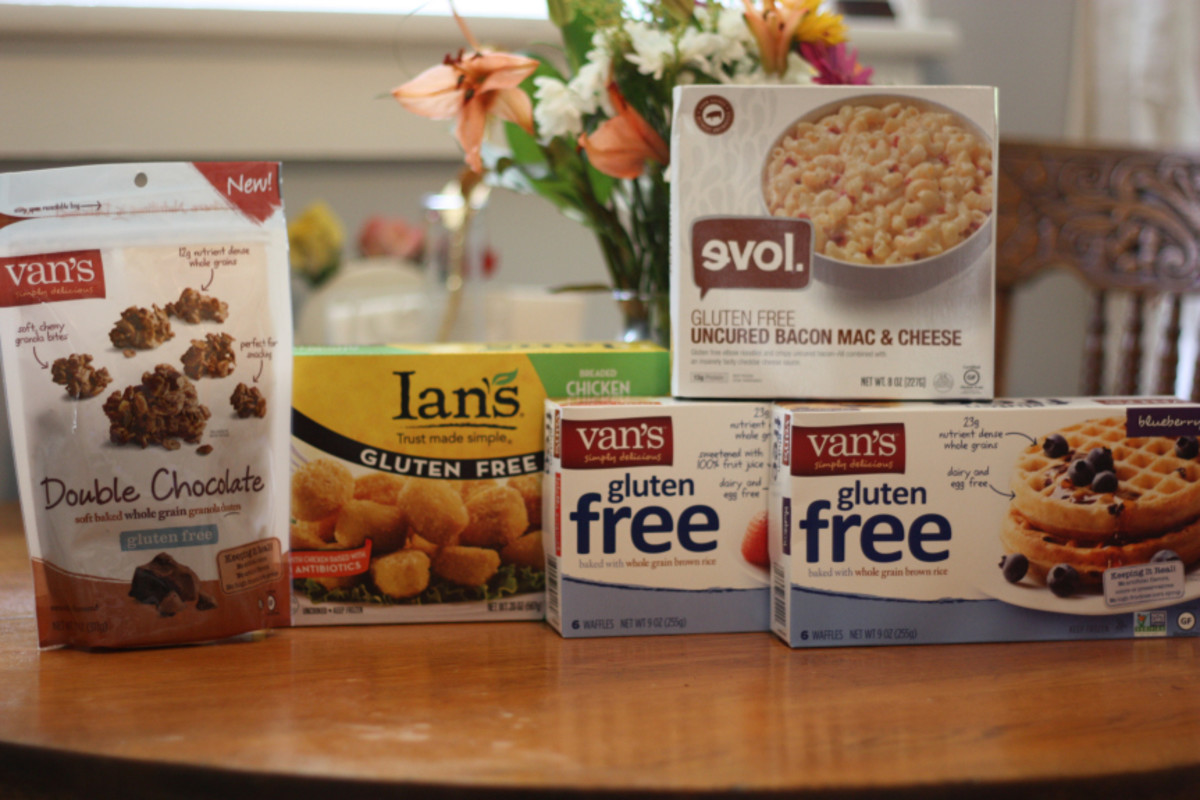- HubPages»
- Food and Cooking»
- Dietary Restrictions»
- Dietary Restrictions for Health
A Totally Awesome Gluten Free Bread Recipe
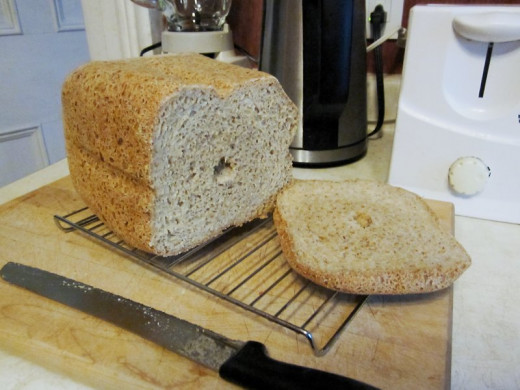
Here’s an absolutely delicious gluten free bread recipe, which I’m sure you’ll really enjoy, whether you have a gluten sensitivity or not. Unlike many gluten free bread recipes you may have found on the internet and elsewhere, this recipe, and its variations, all have similar qualities to regular whole grain bread. I must stress to you, that it doesn’t, and never will have the super-squishy quality of that supermarket bread. I don’t call that bread, anyway.
Some people like their bread soft and moist, while others prefer their bread with a more dense or coarse texture. Whole grain bread is generally of the latter type, with a heavier, more chewy texture, as well as some real flavor. Then there’s even more dense breads, such as pumpernickel or roggenbrot.
This recipe is somewhere in between. So if you like a more substantial, but not overly dense or chewy bread, this totally awesome gluten free bread is for you.

Do you have a gluten sensitivity, or perhaps Celiac Disease?
Eating wheat products can be problematic for many people, and for various reasons. It seems in the last few years gluten intolerance is on the rise. Most doctors and scientists are mystified with the symptoms people are reporting. There is a difference between true celiac disease, and a gluten sensitivity. Celiac disease, once properly diagnosed is likely something you’ve got for life, while a gluten sensitivity, though having many of the same symptoms, can often be alleviated with a change of diet.

There has also been much speculation, and some good science, that the higher-yield wheat that is grown these days, although not currently genetically-modified, and used in a range of packaged foods (including whole wheat flour), is not as digestible as the types of wheat that were grown 20 plus years ago. It seems many of these symptoms (bloating, cramping, fatigue, skin rashes) have appeared in previously healthy people, since this change to these higher-yield wheat cultivars. A book called “Wheat Belly” goes into much detail about this.
So I’m not going to going to get into that here. We’re here to make some scrumptious gluten-free bread.

How to make a loaf of gluten free bread that isn’t a boat anchor
Baking is as much about chemistry as a culinary pursuit. Bread making has been a staple in the diet of civilizations around the world for centuries. The reasons are simple...wheat is cheap and very easy to grow almost anywhere, and it is quite nourishing, as long as the whole grain is used. Note: all-purpose flour is far less nourishing, because it only uses the inner part of the grain (the endosperm). The outer part (the bran) is stripped away. It does make for a better pastry dough though.
The gluten in the wheat is what binds it with the liquids, and allows the dough to expand and hold its shape, and give it that light, spongy texture. All you basically need to add is water (or milk), shortening or oil, sugar, a bit of salt, and some yeast. Without the gluten, your bread would just sit there like a lump. So, we have to resort to some extraordinary measures to make up for the lack of gluten in our gluten free bread recipe.
The first thing you’ll notice about this recipe (if you’ve ever baked a loaf of bread), is a longer list of ingredients. Some of which you probably haven’t used before, like xanthan gum, guar gum or unflavored gelatine. These are essential to getting that loaf to rise to approximately the same level as the wheat bread. I’ve experimented quite a bit with the quantity of the ingredients, but beyond a certain point, I found it just won’t rise properly if you try and make a large loaf (2 lb. - bread machine size). So you’ll have to settle for a slightly smaller, but beautifully textured loaf of bread.
Note: The Nutrition Facts table below is only approximate. It has been gleaned from a number of other gluten-free bread recipes.

Cook Time
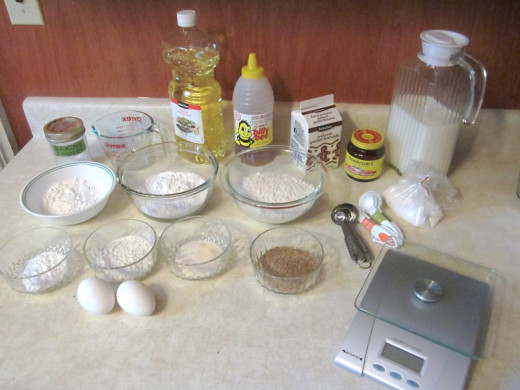
| Nutrition Facts | |
|---|---|
| Serving size: 2 slices | |
| Calories | 130 |
| Calories from Fat | 36 |
| % Daily Value * | |
| Fat 4 g | 6% |
| Saturated fat 0 g | |
| Carbohydrates 22 g | 7% |
| Sugar 3 g | |
| Fiber 1 g | 4% |
| Protein 4 g | 8% |
| Cholesterol 0 mg | |
| Sodium 015 mg | 1% |
| * The Percent Daily Values are based on a 2,000 calorie diet, so your values may change depending on your calorie needs. The values here may not be 100% accurate because the recipes have not been professionally evaluated nor have they been evaluated by the U.S. FDA. | |
Ingredients
- 2 large eggs, *room temperature*
- 1 1/3 cups milk, *room temperature*
- 1/2 cup water, *room temperature*
- 2 tbsp. cooking oil (canola, sunflower)
- 2 tbsp. + 1 tsp. liquid honey
- 2 tbsp. + 1 tsp. fancy molasses
- 1 tsp. fine sea salt
- 1 2/3 cups [250 grams] brown rice flour
- 2/3 cup [100 g] tapicoa flour
- 1/3 cup+ [50 g] arrowroot flour
- 1 tbsp. corn starch (or potato starch)
- 1 1/2 tsp. baking powder
- 1 tbsp.+ 1 tsp. [20 g] xanthan gum, -OR-
- 1 1/2 tbsp. [30 g] guar gum, - NOT BOTH -
- 2 tbsp. [15 g] unflavored gelatine
- 2 1/2 tbsp.+ [25 g] ground flax seed
- 1 1/2 tbsp. [20 g] active dry yeast, or 'bread machine' yeast

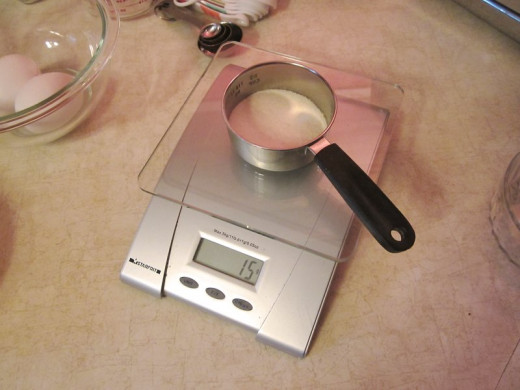
Oven-baked bread or bread machine baked?
This recipe is calculated for a (1½ lb.loaf) bread machine. I’m used to this old bread machine, so I’ll give you these instructions first. See the oven method below for special instructions.
I’ve also included the measured weights of most of the dry ingredients. This will give you a more consistent loaf every time, whereas measuring by volume compresses the flour(s) an unpredictable amount. A small, inexpensive digital kitchen scale is a good thing to have.
Bread machine method:
In a bowl, beat the eggs with a whisk until mixed. Add milk and water and salad oil.
Note: Be sure the above ingredients are at room temperature, either by leaving them out of the refrigerator for an hour, or warming them lightly in a saucepan. Anything above lukewarm will inhibit the rising ability of the dough.
Empty into the bread pan, then add the rest of the ingredients in the order listed.
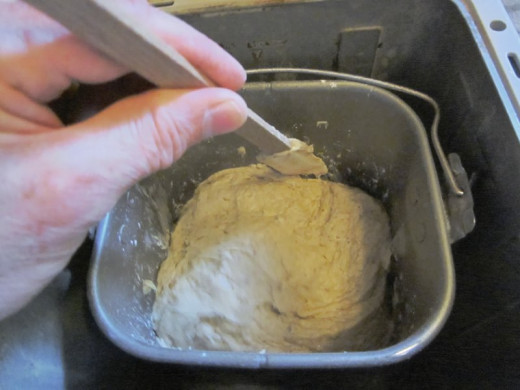
Set the machine for ‘sweet bread’, as well as ‘dark crust’. Press start. Since this bread doesn’t have gluten, it doesn’t require as much kneading (see below). During the kneading, the dough should have the consistency of a moderately thick batter, not the dough ball of regular wheat bread. You’ll need to use a rubber spatula to scrape the dry bits down the sides of the pan, so that it all mixes together properly.
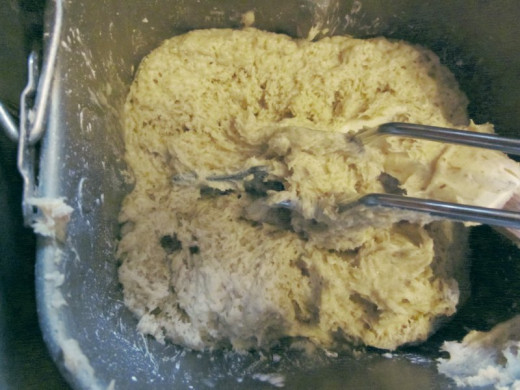
Some finicky business...
When the initial kneading stops (about 45 minutes into the baking), use the spatula to spread the dough away from the stir paddle in the machine. Use a pair of rubber tipped tongs to remove the paddle completely. Spread the dough back together, and smooth over the top.
The reason for this is because the machine will be doing some further kneading, later in the cycle. This extra kneading is not necessary for gluten free bread. Without this (unfortunately bothersome) step, the bread will become a bit too dense and chewy, and rise less..
Feel free to skip this step if you'd rather not be bothered.
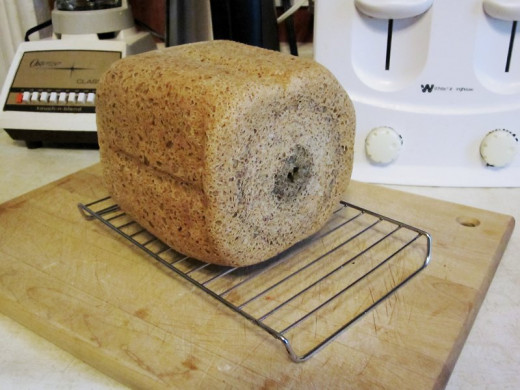
Close the cover of the bread machine, and go about your business. When it’s done, carefully dump the loaf onto a wire cooling rack.
I should warn you, it will take several hours, even after it’s completely cooled, before it evaporates the excess moisture, and reaches its final texture. If you just can’t wait, you could carefully slice off the end piece, and let the rest of the loaf ‘dry out’ for another hour or more. It is particularly delicious toasted, with some honey or jam that isn’t overly sweetened. Enjoy.
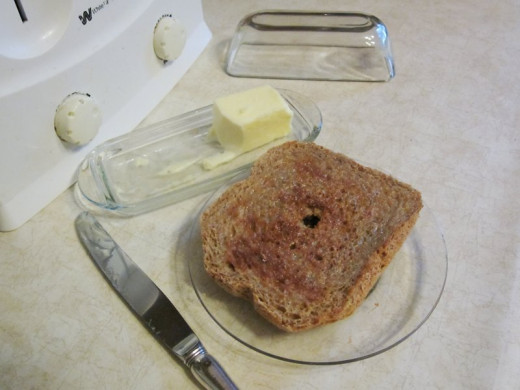

Oven-baked method:
This method is a bit trickier, as you’ll need the right warmth to get it to rise, but not too quickly.
The quantities of the ingredients I’ve listed would be too much for a regular (5 x 9 x 3”) loaf pan. You’d have to scale things down by about 20% over all, and even less of the liquids.
Anyway, you’ll need a mixer, or a food processor. Empty the liquid ingredients into a large bowl, or into the food processor. Mix lightly. You should sift the dry ingredients first, before pouring in with the liquids. Set mixer or food processor to a relatively slow speed and ‘knead’ for about 20 minutes.
Transfer the dough into the loaf pan, cover with parchment paper, and place in a warm location (I would suggest, if you have a toaster oven, set it to 125° or less if you can, and place the bread pan on top of the oven) until the dough rises to double its original volume (about 45 minutes to an hour). If it rises faster than this, your location is too warm, and the loaf will likely collapse after it’s done baking. Alternatively, you could warm your regular oven to about 150°, turn it off and put the bread pan in, and let the dough rise slowly.
As soon as it’s doubled, set your oven (a toaster oven is not particularly recommended) to 350°, and bake for about 45 minutes, or until the top crust is nicely browned. Turn the heat off, and leave it to slowly cool in the oven (it may well collapse if taken out immediately). Then remove the pan, and carefully shake the bread onto a wire rack to cool completely.

Bread-making variations using different flours
Brown (or white) rice flour is the cheapest wheat flour substitute. However, you could also use a number of gluten-free flours, such as almond flour, or teff flour, Though these are considerably more expensive, they will add a lovely flavor. You probably won’t need the molasses, in that case. Use organic cane sugar instead.
If you’re not intolerant or sensitive to gluten, you could also use other wheat flours, such as organic rye, buckwheat, or spelt flour. While not gluten-free, these flours are much lower in gluten than regular whole wheat flour. Just don’t use any more than a half cup. Reduce the brown rice flour to about 200 grams, and use 50 grams of either rye or spelt flour. Buckwheat has a fairly strong flavor, so don’t use more than 1/3 cup (45 grams). It also needs a bit more liquid (up to 2 cups). For rye bread, be sure to add 1 teaspoon of caraway seeds.
Get ready to enjoy the yummiest bread you’ve ever tasted..gluten or no gluten.
This article copyright (2013) by timorous+

